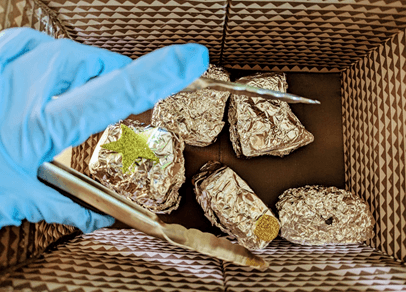Description
Invite kids to an astronaut training camp. Participants will flex their agility in a game of galaxy hopscotch, learn astronaut hand signals for communication, perform a moon rock exploration and complete a My Own Planet Handout.
The handout can be used for passive programming.
Number of Participants
For any number of participants
Space Considerations
An indoor or outdoor space with room for children to move through four different stations
Competencies
- Body awareness
- Classification skills
- Eye-hand coordination
- Following directions
Materials
Galaxy Hopscotch
- Masking tape for indoors or sidewalk chalk for outdoors
- Paper for labelling space words
- Beanbags or stones
Astronaut Hand Signals
- Laptop or device, if screening YouTube video or showing pictures
Moon Rock Exploration
- Moon rock bases: blocks, tennis balls, crumpled scrap paper
- Foil paper
- Rubber gloves
- Tongs
- Foam sticker shapes if desired
- Optional: boxes to divide the moon rocks
- Moon Rock Observation Template
My Own Planet Handout
- Printer paper
- Writing utensils
Preparation
- Prepare the Galaxy Hopscotch using sidewalk chalk if outdoors or tape if inside. Once your seven galaxy words are chosen, you can write them in chalk or print them out. In this second instance, be sure to tape them to the floor to prevent children from slipping.
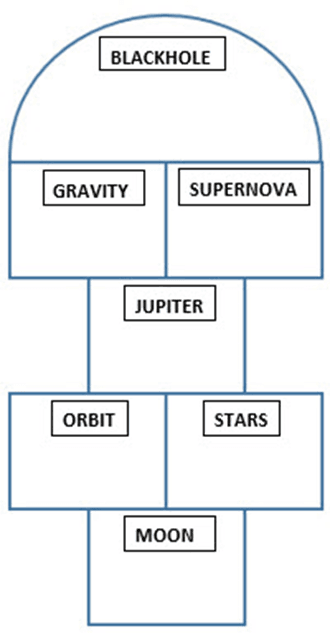
- You can print out the images provided for the Astronaut Hand Signals or set up a laptop or screen to show the NASA STEM YouTube video.
- Wrap the chosen bases (blocks, balled-up paper, stones or another material) in foil paper to create the “moon rocks” for Moon Rock Exploration. You can add foam sticker shapes or letters to the moon rocks for sorting.
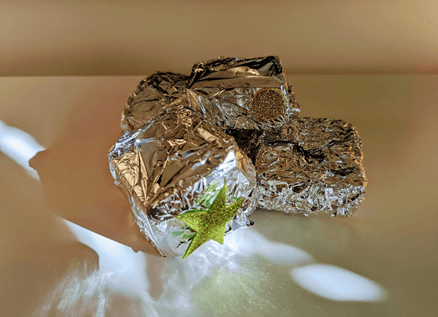
- On either a table or in boxes, set out the rubber gloves, tongs, writing utensils and Moon Rock Observation Templates or scrap paper.
- Search “Astronaut Glove Box Activity” online if you would like to make a fully enclosed environment for kids to study the moon rocks. Note: this setup will allow for a much more limited number of kids to be participating in the activity at one time.
- Print the My Own Planet Handouts and set them out with writing utensils.
Implementation
Galaxy Hopscotch
- Throw a “moon rock” (small stone, twig, beanbag, etc.), trying to land it in the first rectangle.
- The object must land inside the rectangle without touching the border or bouncing out. If it lands on a line or outside the rectangle, you lose your turn; pass the moon rock to the following player and wait for your next turn to try again.
- If the object successfully lands in the first rectangle, hop on one foot into the first empty rectangle and then every subsequent empty rectangle in order. Skip the one your marker is in.
- At the pairs (two rectangles), land on both feet—one foot in each rectangle.
- At the semicircle, land with both feet, turn around and hop back to the start.
- When you reach your marked rectangle again, pick up the moon rock (still balancing on one foot), read or spell the word in the rectangle and then complete the course.
- On your next turn, throw the moon rock to the next rectangle in order and try to go through the entire course again.
- If you fall, jump outside the lines or miss a rectangle or the moon rock, you lose your turn and must repeat the same rectangle on your next turn. The goal is to complete the whole course, having read or spelled all the words.
Astronaut Hand Signals
Astronauts have radios to communicate, but there are times that they may rely on nonverbal communication—for example, during a spacewalk.
NOTE: These hand signals were derived from a video provided by NASA STEM, “How do astronauts communicate nonverbally in space?” The signals apply solely to the context of nonverbal communication between astronauts. We cannot confirm their meaning in any other setting.
- Teach your little astronauts the hand signals below.
- Have kids come up with potential space scenarios to use the signals and have them practice in pairs or small groups.
a. HOLD: raised fist. A scenario for “hold” may include a rescue mission where one of the astronauts is still tethered to something, so they ask to pause or hold.

b. OK: join thumb and pointer finger in a circle, with the other three fingers raised. This symbol can be used as a question or an answer. Have one child point to their partner and make the “OK” symbol, showing the sign being used as the question, “are you OK?” Then their partner can respond using the “OK” signal to signify that they are all right to continue.
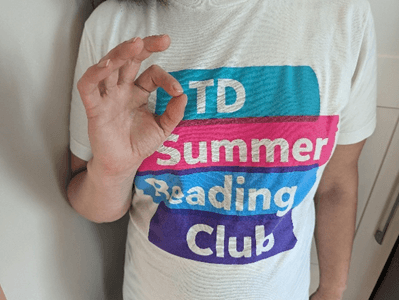
c. NUMBERS. Your young astronauts will practice signifying the numbers one through ten using only one hand. Real-life scenarios for space crew may include indicating suit pressure, water pressure or temperature without the astronaut removing their other hand from a piece of equipment.
1-5
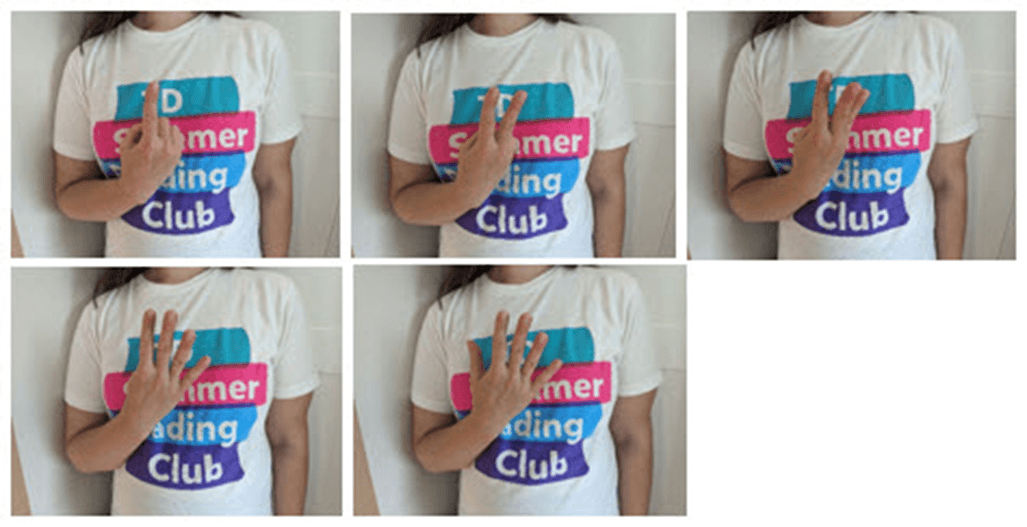
6–10
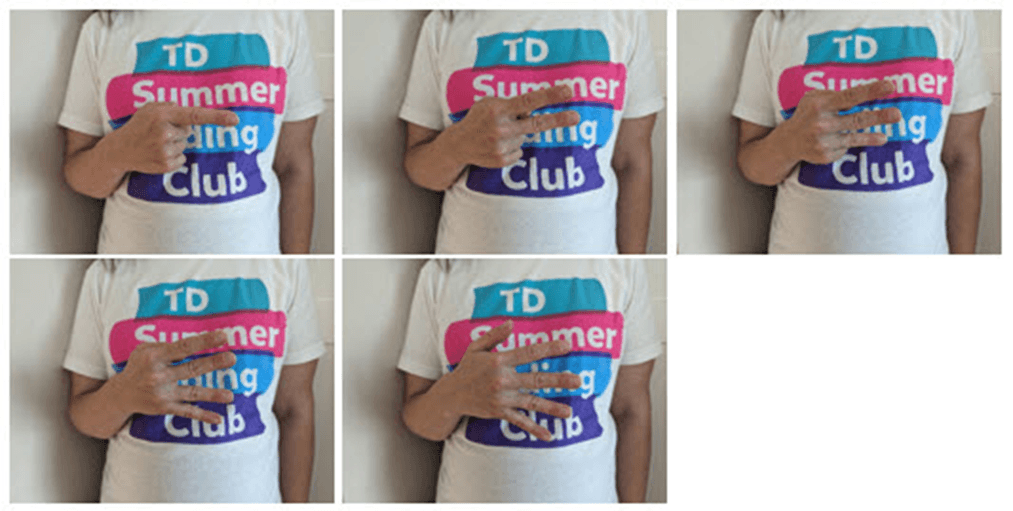
d. I CAN’T HEAR: kids can point to their chest to indicate “me,” then wave across their ear to indicate that they can’t hear, as shown below. An astronaut might use this signal if their radio device is cutting out.
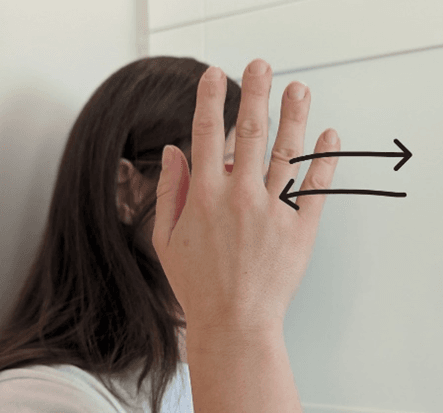
e. WRAP IT UP: kids will point and make a spiral motion with their finger to indicate that the crew needs to finish up what they are doing. The signal could refer to wrapping up a spacewalk and getting back to the ship or wrapping up before a problem gets worse.

Moon Rock Exploration
1. Explain to participants that they will be wearing protective hand coverings (gloves) and using special tools (tongs) to examine moon rocks.
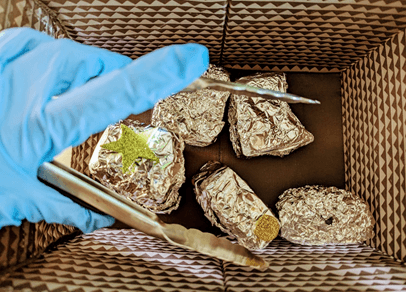
2. Remind everyone that these are precious lunar specimens and not to be touched with bare hands.
3. Encourage kids to assign a tracking number to each moon rock, then record the approximate size and any relevant observations on their template or a scrap piece of paper.
My Own Planet Handout
- Explain both sides of the handout to participants and allow time for them to share their creations with the group if desired.
Accessibility Considerations
Galaxy Hopscotch
- Increase the size of the hopscotch game to accommodate mobility devices.
- Staff/other participants can assist a participant with a disability by picking up the moon rock for them.
- Instead of throwing a moon rock onto the hopscotch layout, a participant can pull spoons labelled with the words from a can.
- Read aloud the name of the rectangle if pulling spoons.
- Remove lose-a-turn rules.
Astronaut Hand Signals
- If showing the video, project it on a large screen if possible and ensure that the audio is loud enough.
- Verbally describe all the hand signals being used.
- Allow kids to practice making the hand signals in small pairs or groups.
Moon Rock Exploration
- Encourage kids to explore the moon rocks in whatever way is most comfortable for them. Wearing the mock astronaut gloves or using the tweezers/tongs is optional.
- Kids can work in pairs or small groups if preferred.
- Offer kids a blank page instead of the template for recording their observations.
- Have several different writing utensils available and allow kids to choose what works for them.
- Post the instructions for this activity using large font if possible, but allow flexibility for how kids interact with the setup.
My Own Planet Handout
- Provide various types of writing tools.
- Provide various types of drawing tools, including tactile ones.
- Project the questions on a screen and read them out loud.
- Participants can work in pairs.
Book Suggestions
Amazing Night Sky Atlas: The Ultimate Stargazing Guide by Nancy Dickmann
The Me I Choose To Be by Natasha Anastasia Tarpley and Regis and Kahran Bethencourt
The Only Astronaut by Mahak Jain and Andrea Stegmaier
Rover and Speck #1: This Planet Rocks! by Jonathan Roth
Super Space Weekend: Adventures in Astronomy by Gaëlle Alméras and David Warriner
The Universe in You: A Microscopic Journey by Jason Chin
Download Links
Moon Rock Observation Template.docx
Images

